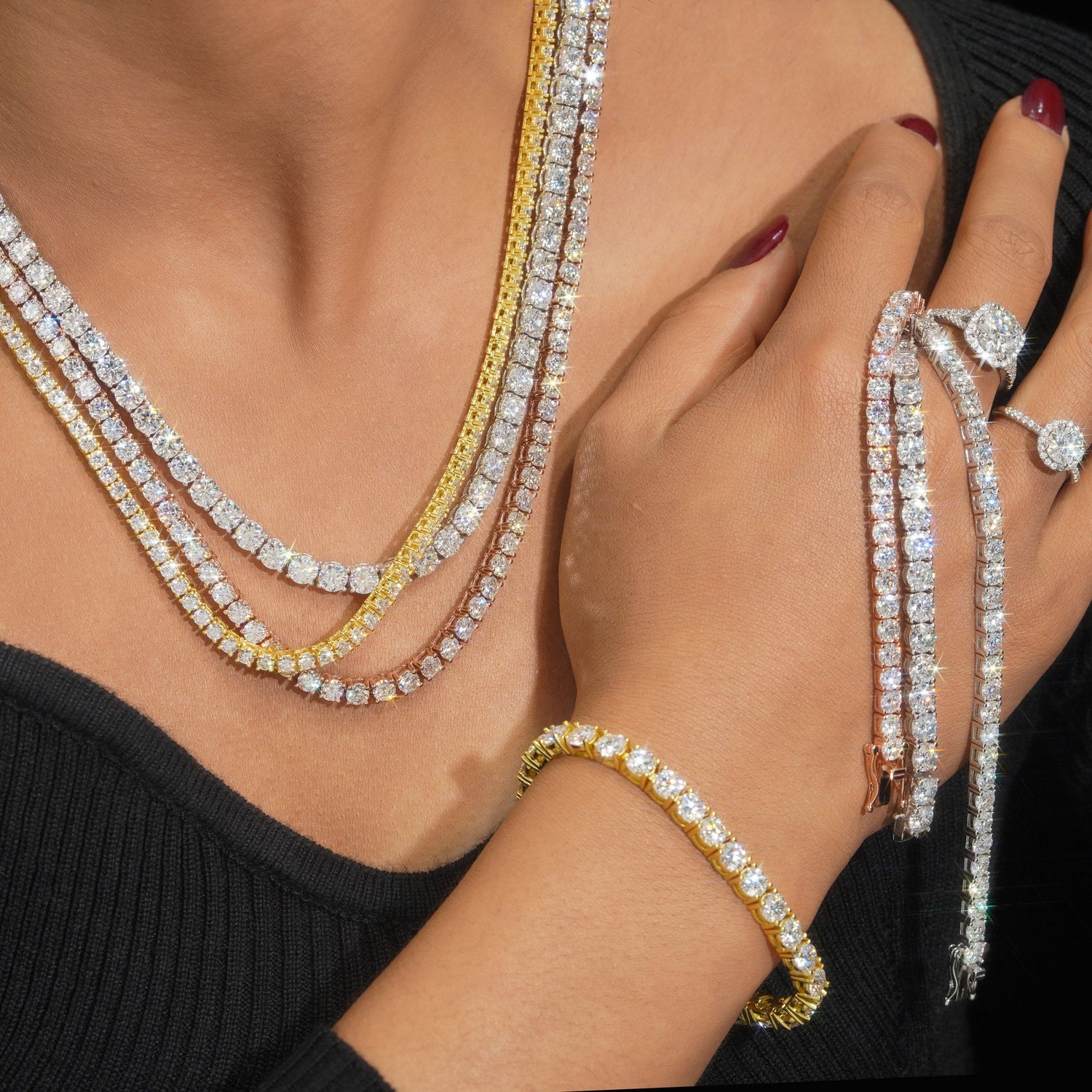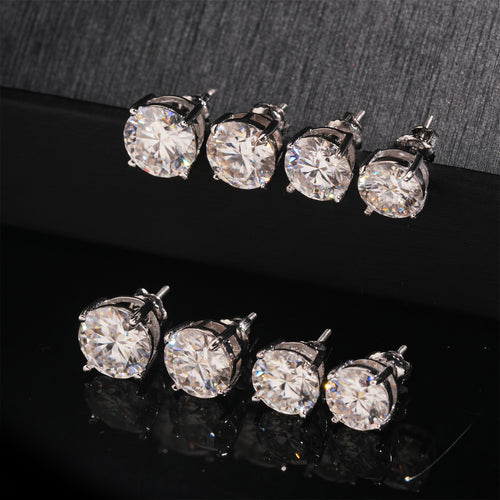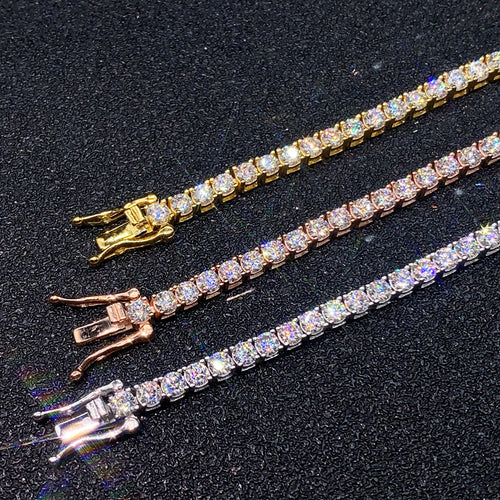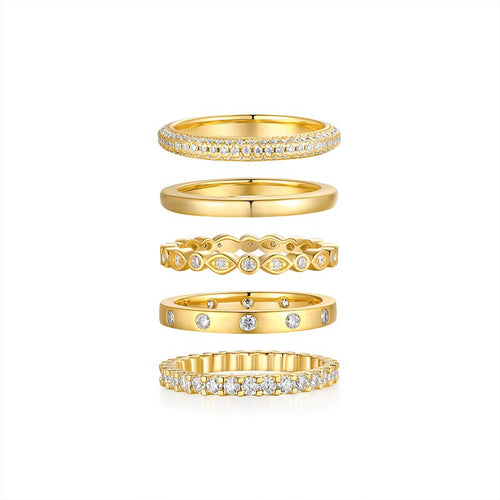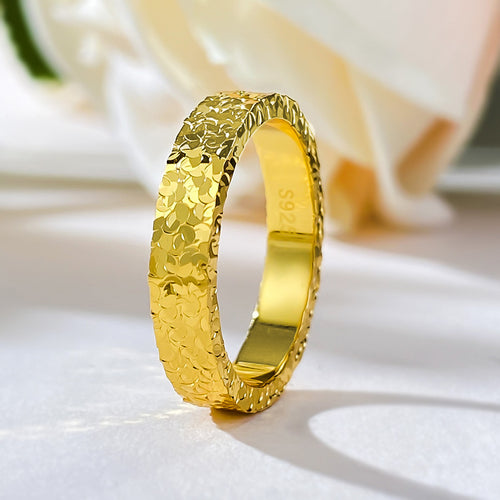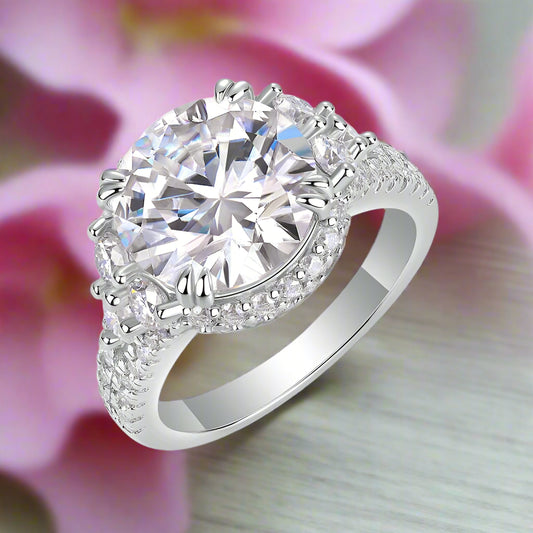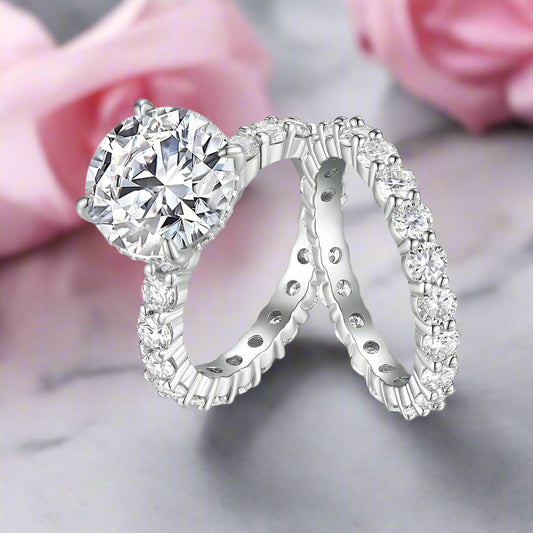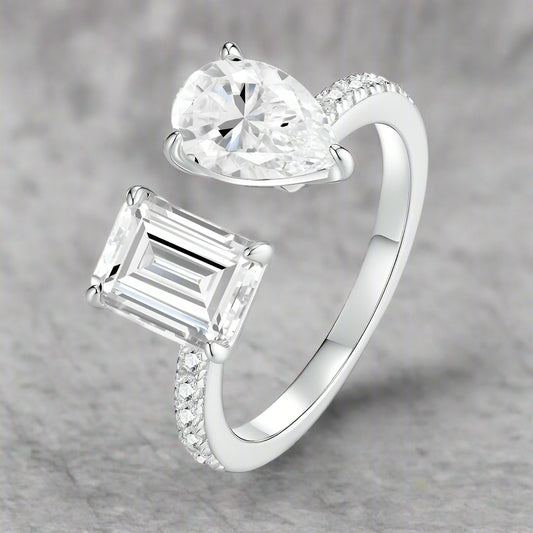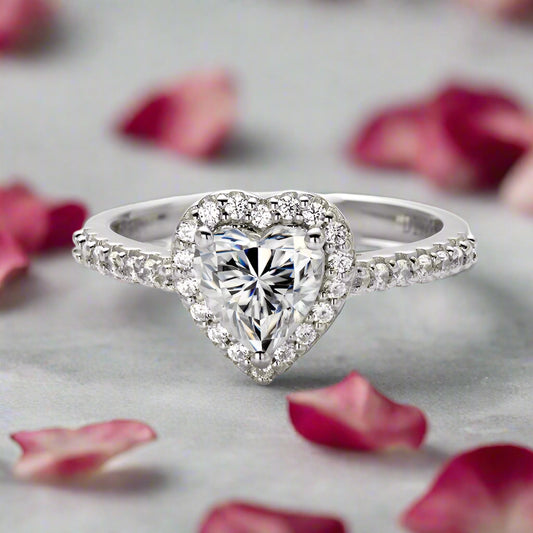When it comes to engagement rings, wedding bands, and fine jewelry, diamonds have long been the traditional choice. But in recent years, moissanite has taken the jewelry world by storm as an affordable, sustainable, and equally stunning alternative. Many shoppers now ask: What exactly is moissanite, and how does it compare to a diamond?
This guide will answer your questions, highlighting key differences in appearance, price, durability, and ethics so you can choose the perfect stone for your needs.

What Is Moissanite?
Moissanite is a gemstone made of silicon carbide (SiC). It was first discovered in 1893 by French scientist Henri Moissan, who found microscopic crystals in a meteor crater. Because natural moissanite is incredibly rare, virtually all moissanite on the market today is lab-created.

How Does Moissanite Differ from a Diamond?
While moissanite and diamond may look similar to the naked eye, they differ in several important ways:
1. Appearance and Sparkle
-
Diamond: Renowned for its brilliance (white light return) and fire (colored flashes), a diamond’s sparkle depends heavily on its cut.
-
Moissanite: Has even more fire than diamonds, producing rainbow flashes under certain lighting conditions. Some people love this extra sparkle, while others prefer the more subtle shimmer of a diamond.
Refractive Index:
-
Diamond: 2.42
-
Moissanite: 2.65 (more sparkle potential)
2. Durability and Hardness
Durability matters for jewelry worn daily.
-
Diamond: The hardest known natural substance, scoring 10 on the Mohs hardness scale.
-
Moissanite: Extremely durable, scoring 9.25 - hard enough to resist scratching and chipping in everyday wear.
3. Price
One of the biggest differences is cost.
-
Diamond: Prices vary based on the 4Cs (carat, cut, color, clarity) but can cost thousands for a high-quality stone.
-
Moissanite: Significantly more affordable - often 80–90% less than a comparable diamond.
4. Ethical and Environmental Impact
-
Diamonds: While many are now ethically sourced, diamond mining can still involve environmental disruption and ethical concerns.
-
Moissanite: Lab-created and conflict-free, making it an eco-friendly and ethical choice.
5. Color Variations
-
Diamond: Available in a wide range of colors, from completely colorless to fancy hues like yellow, pink, or blue.
-
Moissanite: High-quality moissanite is near-colorless but can have a faint yellow, gray, or green tint under certain lighting, especially in larger sizes.

Why Choose Moissanite?
-
Affordability – Larger stone for the same budget.
-
Durability – Strong enough for lifelong wear.
-
Ethical sourcing – 100% conflict-free.
-
Brilliance – Sparkles even more than a diamond.

Quick Comparison Table: Moissanite vs. Diamond
| Feature | Moissanite | Diamond |
|---|---|---|
| Composition | Silicon Carbide | Carbon |
| Origin | Lab-Created (Natural is rare) | Natural or Lab-Grown |
| Mohs Hardness | 9.25 | 10 |
| Refractive Index | 2.65 | 2.42 |
| Price | $200–$1,000 per carat | $2,000–$20,000+ per carat |
| Ethics | Always conflict-free | Varies |
| Fire & Sparkle | Higher rainbow flashes | Classic brilliance |
Final Thoughts
If you want maximum sparkle, durability, and a guilt-free purchase without spending a fortune, moissanite is a fantastic alternative to diamond. While it’s not identical to a diamond, many people love its vibrant fire and eco-friendly origins. Whether for an engagement ring, anniversary gift, or daily wear jewelry, moissanite delivers beauty, value, and peace of mind.

FAQs - What Is Moissanite and How Does It Differ from a Diamond?
1. What is moissanite?
Moissanite is a lab-created gemstone made from silicon carbide. It closely resembles a diamond but is valued for its exceptional brilliance, durability, and eco-friendly production.
2. Is moissanite a real diamond?
No, moissanite is not a diamond. While it shares many visual similarities, it has a different chemical composition, crystal structure, and optical properties.
3. How does moissanite compare to a diamond in sparkle?
Moissanite often has more fire (rainbow-like flashes) than a diamond due to its higher refractive index, giving it a more colorful sparkle.
4. Is moissanite as durable as a diamond?
Diamonds rank 10 on the Mohs hardness scale, making them the hardest natural material. Moissanite ranks 9.25, making it extremely durable and suitable for daily wear.
5. Why choose moissanite over a diamond?
Moissanite is significantly more affordable, ethically produced, and eco-friendly while still offering exceptional brilliance and durability.

6. Can jewelers tell the difference between moissanite and diamond?
With the naked eye, most people cannot tell the difference. However, jewelers can distinguish them using specialized tools.
7. Is moissanite good for engagement rings?
Yes, moissanite is an excellent choice for engagement rings due to its durability, beauty, and affordability.
8. Does moissanite lose its sparkle over time?
No, moissanite maintains its brilliance indefinitely and will not cloud or lose its sparkle with proper care.
9. Is moissanite a good diamond alternative?
Yes, moissanite is one of the most popular diamond alternatives for budget-conscious and eco-conscious buyers.
10. How much does moissanite cost compared to a diamond?
On average, moissanite costs 80–90% less than a diamond of similar size and appearance.

